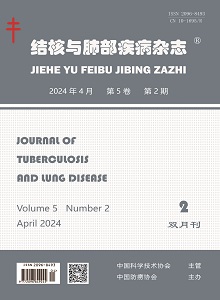Objective To explore the value of lateral flow assay (LFA) in evaluating therapeutic effect of cryptococcal capsular antigen in non-HIV-infected pulmonary cryptococcosis.Methods Twenty-seven from 33 non-HIV-infected pulmonary cryptococcosis patients, who were diagnosed based on HIV test, pathological biopsy and fungal culture in Fuzhou Pulmonary Hospital of Fujian Province from March to September 2017, were collected. Their serum capsular antigen (CrAg) were positive by LFA, and all of them consent to standard treatment in our hospital and regular follow-up with voluntary signature of informed consent. Of the 27 patients, 25 were diagnosed based on pathological examination, and the other 2 were based on cryptococcus neoformans cultured from bronchoalveolar lavage fluid. Qualitative and semi-quantitative data of CrAg, clinical symptoms and chest CT, in 1 month, 3 months, 6 months, 9 months, 12 months, 15 months and 18 months after treatment, were collected. Cumulative response rate and confidence interval of low titer group (<160, n=13) and high titer group (≥160, n=14) before treatment were analyzed by Log-rank test using SPSS 19.0, in order to detect relationship of CrAg changes tested by LFA and complete clinical remission. P<0.05 was considered statistically significant.Results Twenty-four patients underwent anti-fungal treatment, and the other 3 were anti-fungal combined with surgery. After 3-month treatment of anti-fungal, symptoms of 23 patients with clinical symptoms before treatment, were disappeared. During the 18-month follow-up, chest CT showed that most lesions were absorbed, and only few strip shadow were found in 12 patients, the complete response rate was 44.4 (12/27); gradually absorbed in 14 patients, and the partial response rate was 51.9% (14/27); there was no change of lesion found in only one patient. CrAg was negative after treatment, and the change of semi-quantitative titer (from 40 (10, 160) to 5 (1,10)) showed a downward trend in the 27 patients. Analysis between semi-quantitative titer of CrAg before treatment and complete response rate in clinical showed that cumulative response rate in low titer group was higher than that in high titer group (74.2% vs. 21.4%,χ 2=6.808, P=0.009). CrAg in serum tested by LFA 3, 6, and 9 months after treatment (CrAg3/CrAg0:12.5 (6.3, 25.0), CrAg6/CrAg0: 6.3 (0.0, 12.5),and CrAg9/CrAg0:3.1 (0.0, 12.5), respectively) were highly related to clinical response 6, 9 and 12 months after predictive treatment (CR6: 29.6% (8/27); CR9: 40.7% (11/27); CR12: 44.4% (12/27), respectively) (95%CI of AUC were 0.845 (0.660-1.000), 0.807 (0.605-1.000), and 0.836 (0.653-1.000), respectively; Z=2.787, 2.665, 2.952, respectively; P=0.005, 0.008, 0.003, respectively; sensitivity were 89.5%, 93.8%, and 93.3%, respectively;specificity were 75.0%, 72.7%, and 83.3%, respectively). The antifungal drugs were discontinued after 18-month treatment in total 27 patients; however, the CrAg was still positive in 9 patients (titer: 5-20). Conclusion Monitoring of CrAg in serum by LFA is an important to evaluate the efficacy of treatment for non-HIV-infected pulmonary cryptococcosis, but it could not be used as a basis for withdrawal.

 Wechat
Wechat